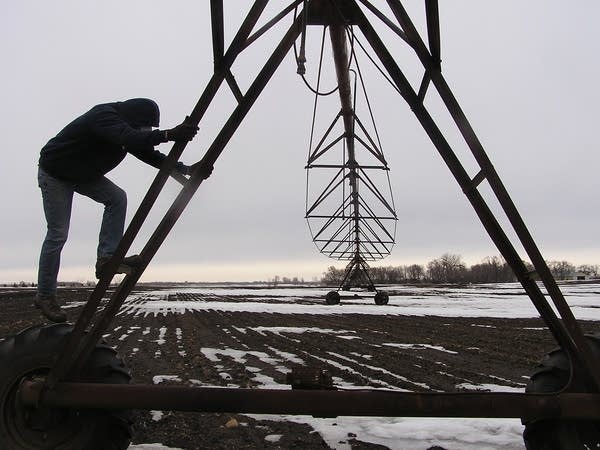Unchecked irrigation threatens to sap Minnesota groundwater

Brooten area farmer Jim Anderson climbs one of his many irrigation rigs. Even an experienced farmer like Anderson, who said he understands the need to protect groundwater through regulation, said he overlooked the need to update a permit for one well he drilled to replace an earlier well.
Mark Steil / MPR News
Go Deeper.
Create an account or log in to save stories.
Like this?
Thanks for liking this story! We have added it to a list of your favorite stories.


